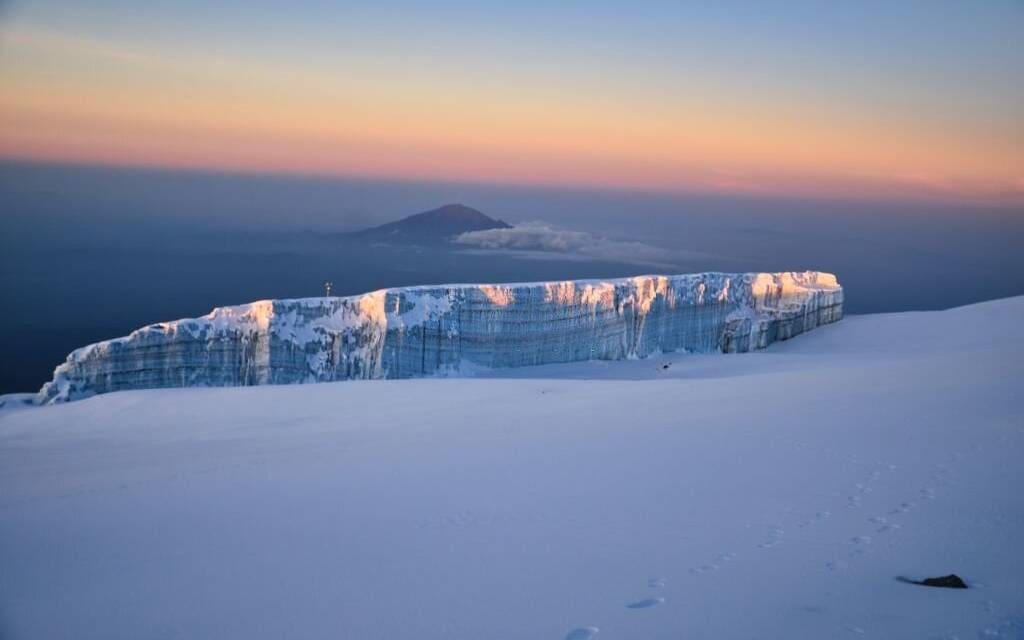Introduction
Kilimanjaro Temperature
Kilimanjaro Temperature
The majestic Mount Kilimanjaro stands tall at almost 6,000 meters, making it one of the most sought-after destinations for adventurers and nature enthusiasts alike. As you embark on the challenging journey of climbing Mount Kilimanjaro, you will witness firsthand the dramatic changes in weather, flora, and fauna as you ascend through its various climate zones. In this article, we will explore the Kilimanjaro temperature you can expect during your climb, the best time to conquer this mighty peak, and the safety considerations you should keep in mind.
Kilimanjaro temperature and Its Variations
The average Kilimanjaro temperature is primarily determined by the altitude rather than the time of day. As you venture higher, the temperatures drop significantly, making it essential to be well-prepared for cold and wet conditions. While the lowlands of Tanzania enjoy relatively warm and stable temperatures throughout the year, Kilimanjaro temperature varies widely depending on the altitude.
Kilimanjaro temperature Zones
At the base of Kilimanjaro, the average Kilimanjaro temperature hovers around 70 to 80 degrees Fahrenheit (21 to 27 degrees Celsius). However, as you ascend through the mountain’s five ecological zones, the temperatures progressively decrease. Let’s take a closer look at the temperature variations in each zone:
The Rainforest Zone (~800m-3,000m): This zone is warm and humid, experiencing abundant rainfall, especially during the wet season. The average temperature ranges from 12 to 15 degrees Celsius at an altitude of 2,870m.
Low Alpine Area (~3,000m-4,200m): Moving As you venture further into the lower alpine realms, you step into a semi-arid environment where the thermometer hovers steadily between a moderate 5 to 10 degrees Celsius, all while perched at the elevation of 3,630 meters.
High Alpine Zone (4,200m-5,000m): In this breathtaking terrain, you’ll find yourself amidst a desert-like landscape, where temperatures dance precariously around the freezing mark, perched at a lofty altitude of 4,970 meters.
Glacial Zone (Above 5,000m): As you ascend to the pinnacle, Uhuru Peak, nestled within the pristine glacial zone, you’ll find the average temperature taking a plunge to approximately -6 degrees Celsius. It’s worth emphasizing that the biting wind chill at this altitude intensifies the cold, creating a truly bracing experience.
Best Time to Climb Mount Kilimanjaro
Choosing the right time to embark on your Kilimanjaro expedition is crucial for a successful and enjoyable experience. While rain and snow are possible year-round, the best time to climb Kilimanjaro is during the “dry” seasons, which are generally more favorable in terms of weather conditions. The two recommended periods for climbing Kilimanjaro are:
January-March: This time frame tends to usher in a colder embrace when compared to the June-October period, with a heightened possibility of encountering the enchanting touch of snow on the summit. Yet, an inherent advantage of embarking on this journey during these months is the peaceful solitude that envelopes the slopes, gifting you with a truly serene and solitary expedition.
June-October: The period from June to October aligns seamlessly with the summer holidays in Europe and North America, rendering it a favored choice among trekkers. It’s worth highlighting that specific routes might witness a surge in footfall during these months. Nevertheless, these are the times when the skies tend to be more benevolent, offering a more dependable and rain-free climate for your expedition.
Average Temperature, Humidity, and Precipitation in Moshi, Tanzania
Moshi, the town located just south of Mount Kilimanjaro, serves as the gateway to many Kilimanjaro climbs. It is situated in the lowest ecological zone and provides a good reference point for understanding the temperature variations you’ll encounter on the mountain. Here are the average temperature, humidity, and precipitation figures for Moshi:
| Month | Low (F) | Average (F) | High (F) | Humidity (%) | Rainfall (in) |
|---|---|---|---|---|---|
| January | 64 | 78 | 92 | 58 | 1.4 |
| February | 64 | 78 | 92 | 57 | 2.0 |
| March | 66 | 78 | 90 | 63 | 4.7 |
| April | 67 | 76 | 85 | 73 | 13.8 |
| May | 65 | 72 | 79 | 77 | 9.3 |
| June | 62 | 70 | 78 | 72 | 1.5 |
| July | 60 | 69 | 78 | 69 | 1.0 |
| August | 60 | 70 | 80 | 66 | 0.7 |
| September | 60 | 71 | 83 | 61 | 0.6 |
| October | 62 | 75 | 88 | 57 | 1.0 |
| November | 64 | 76 | 89 | 57 | 2.5 |
| December | 64 | 77 | 90 | 60 | 2.1 |
As the data illustrates, January and February extend a warm embrace to Moshi, while April and May shower the region with abundant rainfall. June and July introduce a cooler ambiance, and August and September bring a welcome dry spell. These climatic rhythms mirror the broader temperature fluctuations you’ll encounter while scaling the majestic heights of Mount Kilimanjaro.

Altitude and Climate Zones
As you embark on your ascent of Mount Kilimanjaro, you’ll journey through four enchanting climate zones, each a world of its own with distinct characteristics and atmospheric poetry. Join us as we delve deeper into these captivating realms:
The Rainforest Zone (~800m-3,000m): The expedition commences within the embrace of the vibrant rainforest zone, a world where warmth and humidity reign supreme. Here, nature orchestrates a symphony of life amidst abundant rainfall, particularly during the enchanting wet season.
Low Alpine Area (~3,000m-4,200m): Ascending further, you step into the embrace of the low alpine realm, where the landscape undergoes a mesmerizing transformation into a semi-arid oasis. Here, the mercury takes a cooler turn, and the lush vegetation begins to gracefully yield to the sparse beauty of this unique environment.
High Alpine Zone (4,200m-5,000m): The high alpine expanse unfolds like a desert painting, where nature’s brushstrokes create a landscape of stark beauty. Here, the land wears a coat of arid simplicity, boasting limited vegetation and a barren panorama. The thermometer lingers stubbornly around freezing point, while the air itself seems to whisper its own unique story, noticeably thinner and crisper at this awe-inspiring altitude.
Glacial Zone (Above 5,000m): At last, you conquer the heights, reaching the coveted glacial zone, home to the summit itself. Here, the thermometer takes a dramatic plunge, thrusting you into a world of frigid extremes. While freezing conditions prevail, the biting wind chill adds an extra layer of intensity, making the experienced cold even more formidable than what the recorded temperatures may suggest
Safety Considerations
Embarking on the formidable ascent of Mount Kilimanjaro is an adventure that demands both meticulous preparation and a profound commitment to safety. Among the foremost challenges confronting intrepid trekkers is the ever-present specter of altitude sickness—a perilous foe that necessitates a thorough understanding of its symptoms and prudent countermeasures. Opting for a trusted and safety-focused operator, such as Shiri Adventures, becomes an indispensable cornerstone in the pursuit of a triumphant and secure climb.
Conclusion
Climbing Mount Kilimanjaro is a remarkable adventure that takes you through a range of temperatures and climate zones. From the warm and humid rainforest to the freezing glacial zone, each stage of the journey offers a unique experience. By understanding the temperature variations, choosing the best time to climb, and prioritizing safety, you can embark on a successful and unforgettable expedition to the rooftop of Africa.
Never underestimate the significance of packing the essential gear and clothing that will serve as your fortress against the elements during your ascent. Armed with thorough preparation and the invaluable wisdom imparted by seasoned experts, you’ll not only have the chance to conquer Mount Kilimanjaro but also to craft indelible memories that will etch themselves into the annals of your life for all time.
